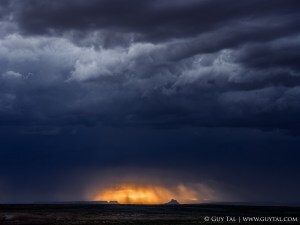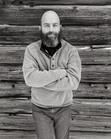Those Great and Simple Images
Camera, camera, what do you do—and I damn your eye, damn your wink, damn your memory—for with all of that you still can’t think.
—W. Eugene Smith
In 1937, Albert Camus, then just 24 years old, published his fist book under his own name—L’Envers et l’Endroit (variously translated into English as The Wrong Side and the Right Side, or as Betwixt and Between). The book consisted of several essays, deeply raw, introspective, and personal, recounting his early experiences growing up in French-occupied Algeria, and some of his early travels. The book received relatively little attention. Twenty years later, in 1957, at age 44, following the publication of his more famous titles and more mature philosophy, he became the second-youngest recipient of a Nobel Prize in Literature.
The following year, owing to Camus’ newfound fame, L’Envers et l’Endroit was republished with a new preface in which he reflected on his life and work in the two decades that passed. In the new preface, he wrote:
Every artist keeps within himself a single source which nourishes during his lifetime what he is and what he says. When that spring runs dry, little by little one sees his work shrivel and crack. These are art’s wastelands, no longer watered by the invisible current. His hair grown thin and dry, covered with thatch, the artist is ripe for silence or the salons, which comes to the same thing. As for myself, I know that my source is in The Wrong Side and the Right Side, in the world of poverty and sunlight I lived in for so long, whose memory still saves me from two opposing dangers that threaten every artist, resentment and self-satisfaction.
He concluded the preface, writing, “At least I know this, with sure and certain knowledge: a man’s work is nothing but this slow trek to rediscover, through the detours of art, those two or three great and simple images in whose presence his heart first opened. This is why, perhaps, after working and producing for twenty years, I still live with the idea that my work has not even begun.” Less than two years later, he died in a car crash at age 46.
When I think about my own “great and simple images”: those in whose presence my heart first opened—my most meaningful and lasting memories—my first realization is that, despite spanning many different places, people, and experiences; and despite the broad range of emotions they inspire—from euphoric joy to deep despair—all have one thing in common: they stand out within the strange and intricate tapestry that is my life story as the most intensely beautiful.
Upon further reflection, another—less obvious—commonality emerged: none of these images is today manifested in any tangible form: in an actual, visible picture. This is a rather jarring conclusion for one who has dedicated much of his life to the study and creation of beautiful images.
I have long ago lost interest in images that merely, as Hermann Hesse put it, “attempt nothing except to be beautiful.” In photography, I have come to refer to images aiming no higher than to impart aesthetic pleasure as “photographic tautologies”: images that are beautiful for no other reason than that they depict beautiful objects. In previous writings I have referred to such images as representational—literally re-presenting aesthetics that would have been obvious to anyone who might behold the same subject or scene, the artist’s role limited merely to the skill of rendering them faithfully and/or at some fortuitous time, but adding no further personal, deliberate meaning to them beyond their obvious appeal to the senses.
This may seem at odds with my belief—affirmed often and without fail in nearly six decades of life—that the pursuit of beauty in any form may be the closest thing I may cite as my reason for living. But in fact it is not at odds. The beauty that Hesse referred to—aesthetic beauty—the simplest, most obvious, surface-level sort of beauty: a beauty that may be a pleasant veneer of some images, experiences, and thoughts but does not penetrate deeper than that, is not the sort of beauty that Camus referred to as “great and simple.”
The greatness Camus referred to goes beyond surface-level aesthetics. Being a perception corresponding to a person’s most cherished memories, it must stand out from among all other memories in some significant way, whether manifested in depth, complexity, intensity, mystery, elation, perhaps even pain.
Simplicity as Camus intended likewise it is not meant to denote ease, superficiality, or lack of complexity. The simplicity he wrote of—the simplicity of a person’s most cherished memories—is of a different nature. It is the kind of simplicity contained in expressions such as “be your true self,” or “do what you love”—a simplicity that, for each person, refers to things of inexpressible depth and complexity that, no matter how skilled a person may be in any expressive medium, can never be wholly conveyed to another in words or in artistic creations.
We may share with another person some aspects of deceptively simple words representing thoughts, feelings, experiences, beliefs. We may indicate to another person that they are important and meaningful to us. But in the end, the other person’s empathy, sensibilities, and own values must fill the gaps to form the perception of understanding: theirs, not ours. And so, for each of us our great and simple images are by necessity ones we can never render in all their depth and complexity in any tangible form: an object, words, or sounds. But if we are skilled in some expressive medium, we may still impart to another person the experience of meaningfulness—if not the same greatness and simplicity as we feel it, at least their vividness and beauty, and the intensity of our feelings toward them.
There are many examples I know of in art and literature (also in mathematics and science, for those trained in these disciplines). One that comes to mind is Norman Maclean’s famous passage in A River Runs Through It: “But when I am alone in the half-light of the canyon, all existence seems to fade to a being of my soul and memories, and the sounds of the Big Blackfoot River and a four-count rhythm, and the hope that a fish will rise. Eventually, all things merge into one, and a river runs through it.”
There is also the famous scene from the film Citizen Kane where the character of Jerry Thompson, puzzled by his inability to decipher the meaning of “Rosebud”—Kane’s most profound “great and simple image”— concludes, “I don’t think any word can explain a man’s life,” only to have the tragic error of his statement then rendered in one of the greatest, most heart wrenching cinematic finales of all time.
“Alas! The memories that are swallowed up in the abyss of the years!,” wrote Paul Cézanne shortly before his death to his friend and patron Ambroise Vollard. He then mused, “I’m all alone now and I would never be able to escape from the self-seeking of human kind anyway. Now it’s theft, conceit, infatuation, and now it’s rapine or seizure of one’s production. But Nature is very beautiful. They can’t take that away from me.”
Another example are these simple lines in Rainer Maria Rilke’s poem, “Remembering”:
You think of lands you journeyed through,
of paintings and a dress once worn
by a woman you never found again.
And suddenly you know: that was enough.
You rise and there appears before you
in all its longings and hesitations
the shape of what you lived.
I tried to think of examples of “great and simple images” in the medium of photography but came up very short. I believe I have managed to come close to expressing a small handful of my own great and simple images in some of my photographs (perhaps five at best). Even for those, I doubt if or to what degree they may result in an opening of hearts in anyone but me, having the memories of their making to bolster their effect. I considered in contrast examples such I quoted above, which seem to achieve their effect consistently and powerfully even in people who have never experienced the things or events they mention. The same is of course true for some music, which may impart profound emotions by form alone, often without reference to any material things.
I was moved to write this essay today because I have come across one such rarity: a photograph that struck me as a great and simple image and opened my heart. It was a photograph of a young boy and his dog alone in a beautiful field.
I have been a young boy with a dog in a field. It is without question one of, perhaps even the, greatest among my own great and simple images, looming vibrant from among so many memories of an otherwise confusing and fearful childhood, in a place and a time that no longer exist. So vivid it is for me that I can recall even the smells—of the field, of the air, of the dog’s fur. Also, the sounds and the breeze and the sunlight on my skin. For all I have experienced in life, I have never known a better thing to be than a boy with a dog in a field. If I could choose one experience from among my decades of life to spend all eternity in, that would be it.
But I can’t help wonder if this same image would have aroused the same feelings in people who do not share my memories, my love of dogs and fields, or the settings against which this experience stands out to me so boldly, in the same way that Maclean’s or Rilke’s words may arouse people who may not share a love of rivers or a yearning for unresolved memories of chance encounters.




